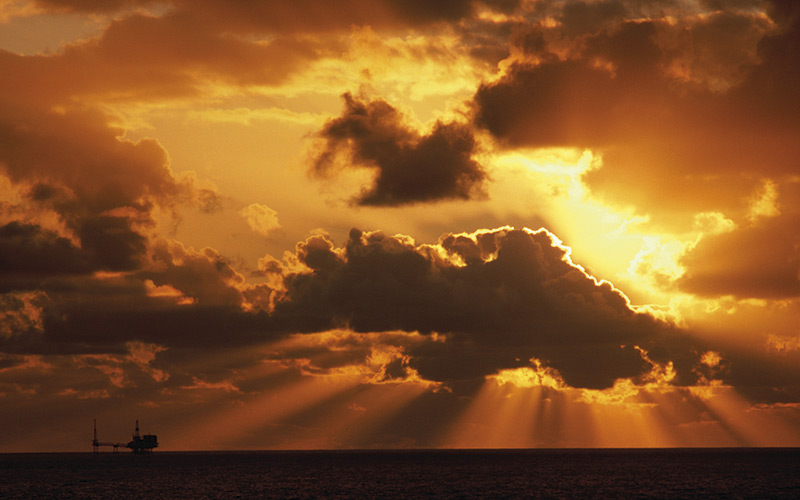Specialists boost North Sea prospects
Andrew Hockey at Independent Oil and Gas discusses how the energy transition is helping reinvigorate the UK North Sea by enabling development of more marginal domestic gas reserves cheaply

One impact of the energy transition is a tighter rein on oil and gas CAPEX from the majors, which has led them to move away from the traditional, ‘mature’ areas of the North Sea and focus remaining funds on higher margin opportunities. This has left space for more independent operators to pick up divested aging, neglected or stranded assets and keep them producing or bring them to market.
Independents like us (Independent Oil and Gas [IOG]), Verus Petroleum and Enquest can specialise by targeting certain parts of the upstream value chain. Enquest, for example, is a late-life asset specialist focusing on squeezing the last drop out of older fields that may have passed under the radar of bigger companies.
This transition is injecting life into mature areas of the North Sea. Capital costs are down and operating efficiency is up, helped by lower operating costs and a rise in production efficiency. New technologies are being applied in the simplest ways, using off-the-shelf or repeatable designs where possible, which helps cut costs and shorten the time to first production.
The government is also playing its part, having put in place a much simpler framework, both fiscally and from a regulatory point of view. Establishing the Oil and Gas Authority was a good thing, with its emphasis on maximising economic recovery (MER) and encouragement for data sharing and collaboration to enhance efficiency. Another important step was to split liability for decommissioning costs with previous owners, which encourages purchase and late-life development by smaller specialists.
Until recently it was difficult to get hold of capital – but as prices rise, fund managers are raising their exposure and more is becoming available to small companies, enabling them to move forward with projects. In addition, contractors are also more open to take some of their payment after first gas, and gas off-takers are also more willing to provide capital, although normally only for near-field upgrading and development – rather than in frontier or high-risk areas.
Gas security of supply
The UK has been a net gas importer since 2003, and the proportion has now risen to about 60%. Unless fresh reserves are developed in the North Sea, this figure will increase further (gas is expected to be used heavily as a bridging fuel in the energy transition), raising questions over security of supply and (with the closure of the Rough storage facility last year) flexibility in meeting spells of high demand.
New domestic gas production is also good for the UK’s balance of payments, employment, energy consumers and the economy generally. This move to develop more marginal fields at relatively low cost, re-using existing infrastructure, should be welcomed wholeheartedly by all concerned.
Aside from producing more gas for use as a bridging fuel, and extracting a larger proportion from each accumulation, the oil and gas sector is also demonstrating its commitment to the environment through efforts to reduce associated methane (a powerful greenhouse gas) emissions. Most companies are also making efforts to reduce their carbon footprint by consuming energy more efficiently – all of IOG’s platform designs have solar panels and no flaring.
The UK North Sea oil and gas industry is going to be important in the coming decades, providing secure, flexible, low carbon energy, tax revenue and employment. It’s crucial to keep our global leadership in areas such as subsea engineering, and opportunities are beginning to return. Hopefully, we can also attract a younger, more diverse workforce. We realise that the industry’s image isn’t always brilliant, but I think we’ve still got a lot to give this country in the years to come.
By Andrew Hockey, CEO, Independent Oil and Gas
Saving stranded assets
IOG’s Southern North Sea gas portfolio is a great example of the new type of developments happening in the basin. It consists of two main development hubs, with proven reserves and nearby prospective acreage. The key to keeping costs down is to use existing infrastructure, so gas will be transported to shore through the Thames Pipeline, which IOG acquired in April from Tullow, Centrica and Perenco. The decommissioned 90km pipeline runs from the Thames cluster of fields to the Bacton gas terminal.
IOG plans to tie in output at the 60km point and recommission the line. The Blythe hub will produce gas from the Blythe and Elgood fields, while the Vulcan satellite hub takes gas from the Southwark, Elland and Nailsworth discoveries. Without this plan, the departure of previous owner ConocoPhillips and the closure of the Theddlethorpe Terminal later this year would have left these fields as stranded assets containing 2P reserves of 303bn cubic feet (Bcf) – which is a substantial volume.
In addition, IOG owns the 114Bcf appraisal opportunity at Harvey, along with two 30th Licensing Round awards nearby, both containing existing gas discoveries totalling around 200Bcf. This amounts to another 314Bcf that could be brought to shore in this value-for-money project.
Funding all this is tricky, and that’s an area of focus. Phase one capital requirement alone totals about £200m. IOG is aiming to secure funding and get to final investment decision later this year, with first gas set for late 2019.
Image credit | Getty Images






Follow us
Advertise
Free e-Newsletter